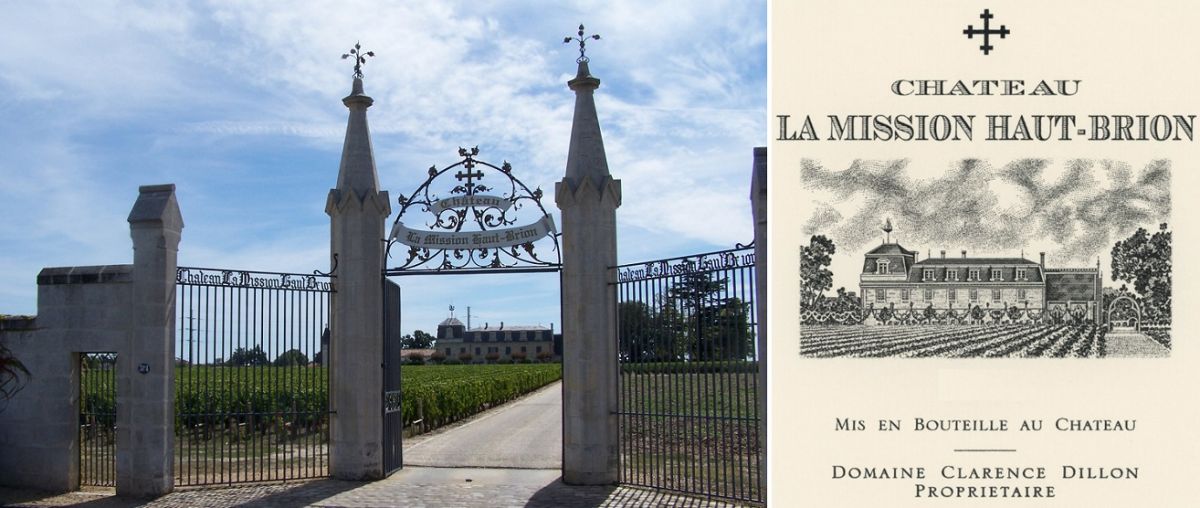The winery is located in the municipality of Talence in the Pessac-Léognan area of Graves (Bordeaux). Its origins date back to 1540, when the nobleman Louis de Roustain sold the Arrejedhuys vineyard to the wine merchant Arnaud de Lestonnac. Lestonnac was the husband of Marie, the sister of Jean de Pontac (1488-1589), the owner of the neighbouring Château Haut-Brion. The Lestonnac family owned the two Haut-Brion vineyards for a time and later also Château Margaux. Château La Mission Haut-Brion remained in the family until 1664. In that year, Catherine de Mullet transferred it to the Catholic Lazarist order "Mission Saint-Vincent-de-Paul". It was during this period of spiritual ownership that it was given its current name. The chairman of the order, Père Simon, subsequently helped the estate to flourish.

As governor of the province of Guyenne, Marshal Richelieu (1696-1788) came to know and love the wines of La Mission. One day, he tasted a particularly remarkable one. His servant informed him that it was a Mission Haut-Brion. The marshal is said to have exclaimed: " If God didn't want us to drink, why would he have made this wine so good?" In the course of the French Revolution, the property was expropriated at the end of the 18th century and acquired by Martial-Victor Vaillant at an auction in 1792. His descendants sold it in 1821 to Célestin Chiapella (1774-1867), who came from the USA. His son Jérôme had the vineyard enclosed and a wrought-iron portal built. Exports to the USA were intensified. The wine was awarded a gold medal at the World Exhibition in London in 1862.
In 1884, Jérôme Chiapella transferred the estate to the "Société Anonyme des Etablissements Duval" in Paris, which was then acquired by the wine merchant Ferdinand de Constans in 1895 and became the property of the wine merchant Victor Coustau in 1903, who also owned the neighbouring Château La Tour-Haut-Brion. He sold Château La Mission Haut-Brion to his friend Frédéric Otto Woltner (*1865) in 1919. His sons Fernand and Henri contributed significantly to improvements. For the first time in Bordeaux, they used enamelled cement fermentation tanks for better temperature control and improved the quality of the white wine. After Victor Coustau's death, the Woltner brothers took over the winemaking out of friendship. In gratitude, Marie Coustau left them the estate in 1935. Henri Woltner ran it until his death in 1974.
The heir Francis Dewavrin, husband of one of the Woltner daughters, then sold both vineyards in 1983 to the American Dillon family, who manage a number of other important vineyards under Domaine Clarence Dillon. The CLMHB vineyards cover 21 hectares of vines planted with Cabernet Sauvignon (48%), Merlot (45%) and Cabernet Franc (7%). The extremely long-lasting red wine is matured for up to 24 months in 100% new barriques. The powerful, deep dark-coloured wine is strikingly different from the "feminine" Château Haut-Brion and is considered "masculine" by contrast. Outstanding vintages include 1981, 1982, 1983, 1985, 1986, 1988, 1989, 1990, 1991 and 1993 to 2000 without interruption. In the Graves list, the red wine is classified as "Cru Classé". The second wine produced since 1991 is called "La Chapelle de la Mission Haut-Brion".
Image: by Henry Salomé - Own work, CC BY-SA 4.0, Link
Voices of our members

Using the encyclopaedia is not only time-saving, but also extremely convenient. What's more, the information is always up to date.
Markus J. Eser
Weinakademiker und Herausgeber „Der Weinkalender“